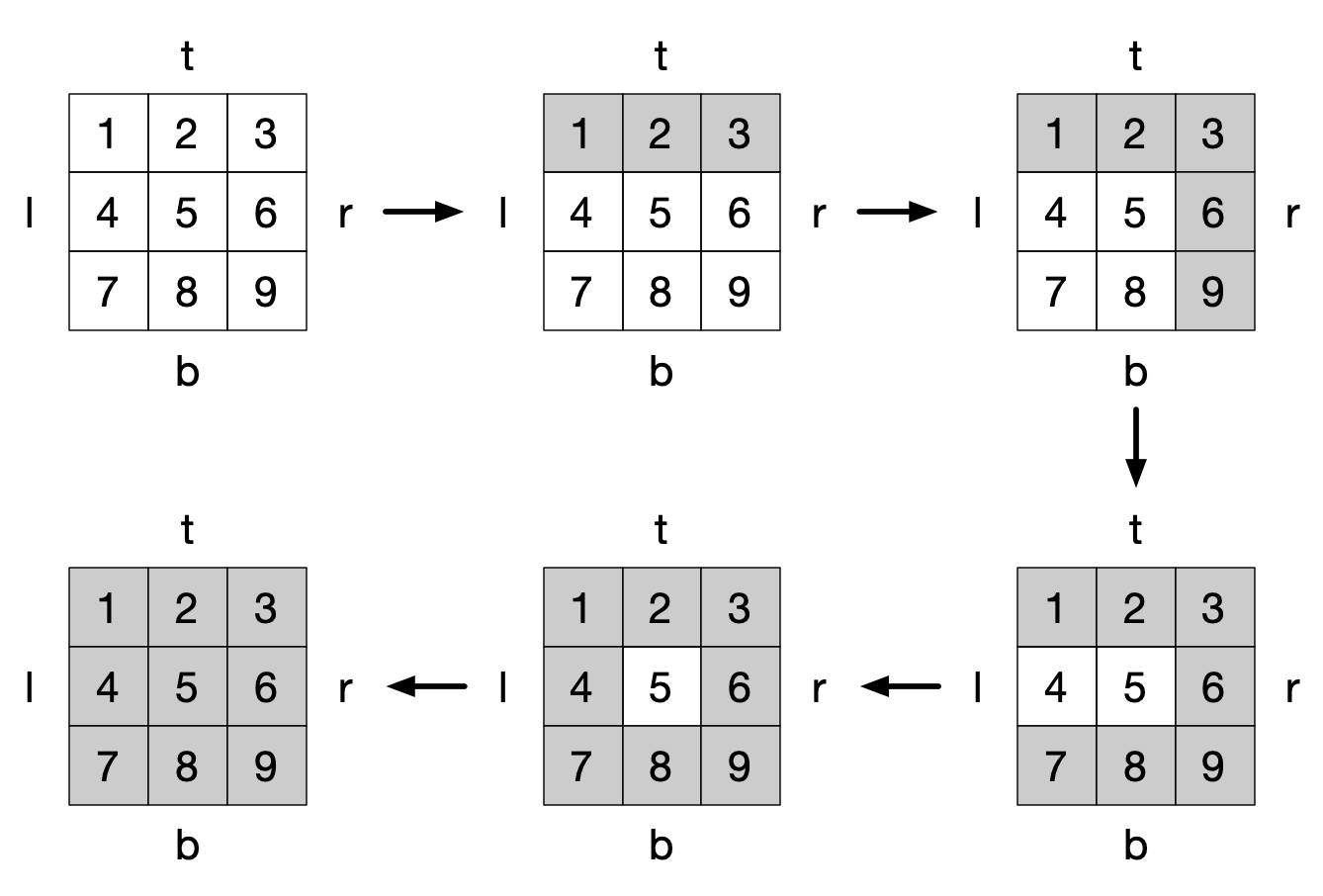1
2
3
4
5
6
7
8
9
10
11
12
13
14
15
16
17
18
19
20
21
22
23
24
25
26
27
28
29
30
31
32
33
34
35
36
37
38
39
40
41
42
43
44
45
46
| func spiralOrder(matrix [][]int) []int {
var result []int
if matrix == nil || len(matrix) == 0 {
return result
}
row1, col1 := 0, 0
row2, col2 := len(matrix) - 1, len(matrix[0]) - 1
for row1 <= row2 && col1 <= col2 {
result = append(result, getEdge(matrix, row1, col1, row2, col2)...)
row1, col1, row2, col2 = row1 + 1, col1 + 1, row2 - 1, col2 - 1
}
return result
}
func getEdge(m [][]int, row1, col1, row2, col2 int) []int {
var tmpResult []int
if row1 == row2 {
for i := col1; i <= col2; i++ {
tmpResult = append(tmpResult, m[row1][i])
}
return tmpResult
}
if col1 == col2 {
for i := row1; i <= row2; i++ {
tmpResult = append(tmpResult, m[i][col1])
}
return tmpResult
}
for i := col1; i < col2; i++ {
tmpResult = append(tmpResult, m[row1][i])
}
for i := row1; i < row2; i++ {
tmpResult = append(tmpResult, m[i][col2])
}
for i := col2; i > col1; i-- {
tmpResult = append(tmpResult, m[row2][i])
}
for i := row2; i > row1; i-- {
tmpResult = append(tmpResult, m[i][col1])
}
return tmpResult
}
|
